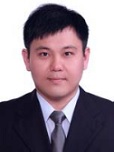International Conference on Coastal Zones
Osaka, Japan

Yun-Ta Wu
International Wave Dynamics Research Center, National Cheng-Kung University, Tainan,Taiwan
Title: Dr
Biography
Biography: Yun-Ta Wu
Abstract
It is of great importance to understand the evolution and shoreline motion of long-wave on coastal beaches so as to have sufficient knowledge applied to inundation mapping and tsunami forecasting. Experimentally, reliable measurements are to convincingly provide direct observation through naturally non-linear fluid system, which are useful and desirable for numerical model validation. Due to the limited length of laboratory-scale wave flume, some natural features of coastal environment in terms of mild slope and turbulent flow cannot be properly reproduced in laboratory-scale experiments. This fact implies the necessity of large-scale physical modeling tests. In the past ten years, detailed measurements on the evolution and run-up of breaking solitary waves on different gradients of sloping beaches have been carried out in a supertank (300m × 5.0m × 5.2m) at Tainan Hydraulics Laboratory (THL), National Cheng-Kung University, Taiwan. Artificial beaches built by smooth layers of concrete with different slope gradients, i.e., 1/20, 1/40, 1/60, 1/100 and composite geometry, have been constructed to investigate the slope effects on wave hydrodynamics. The purpose of this study is to validate an open-source non-hydrostatic model SWASH by using those of existing measured data conducted in a supertank of THL. After calibrating the Manning friction coefficient of the slope surface, model-data comparisons in terms of free surface elevations and run-up motions will be detailed. Finally, this model will then be used to study the effects of submerged obstacles into the implication of long-wave run-up mitigation and some preliminary results will be demonstrated through this presentation.
